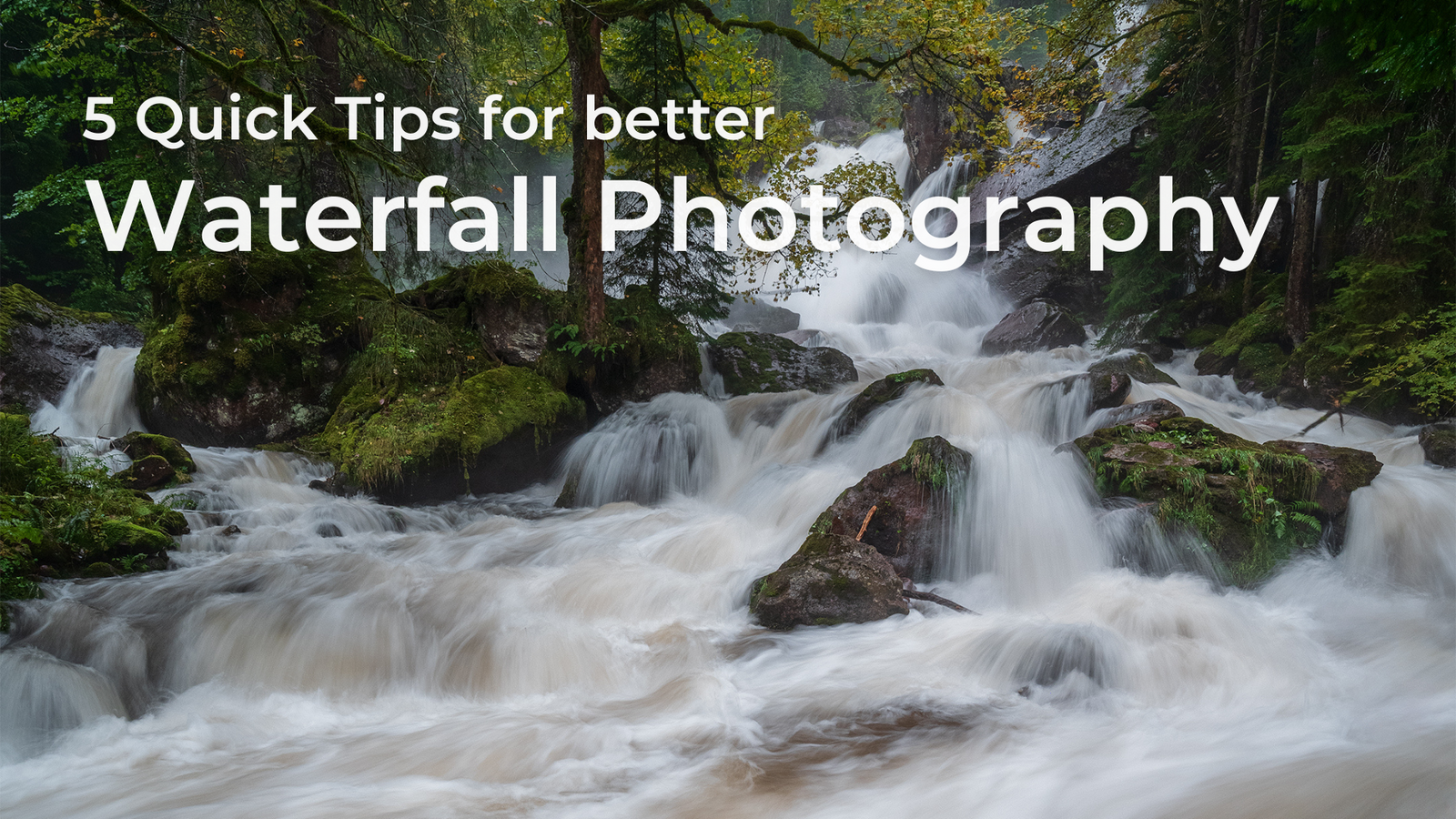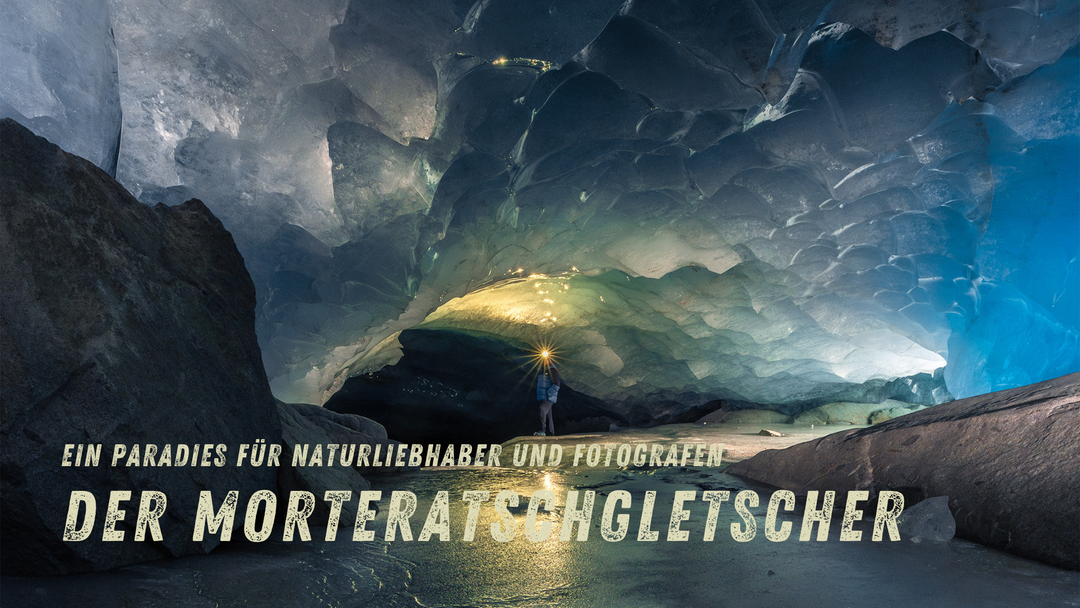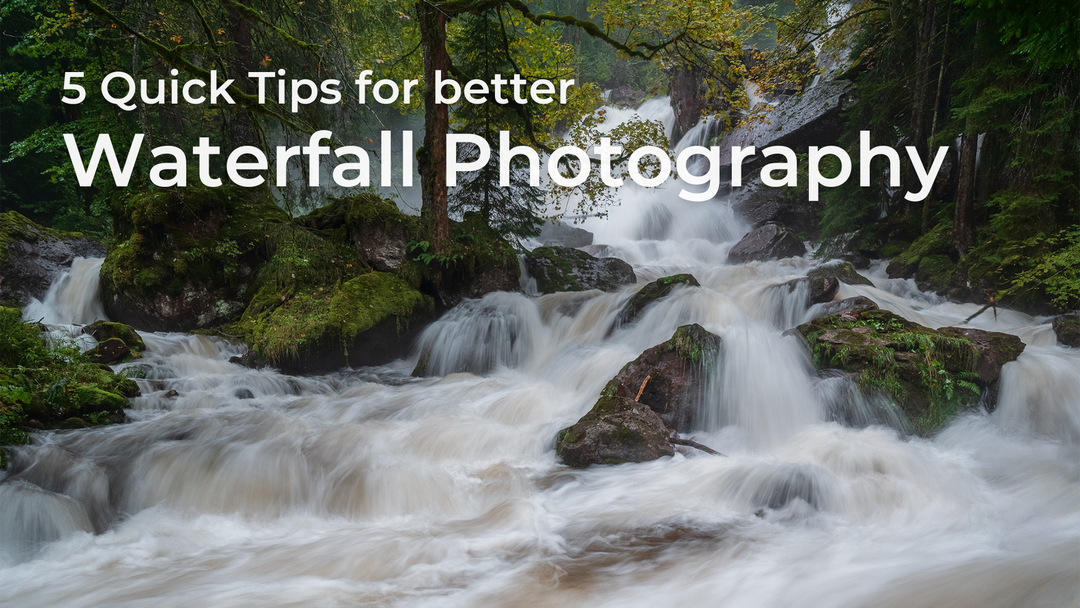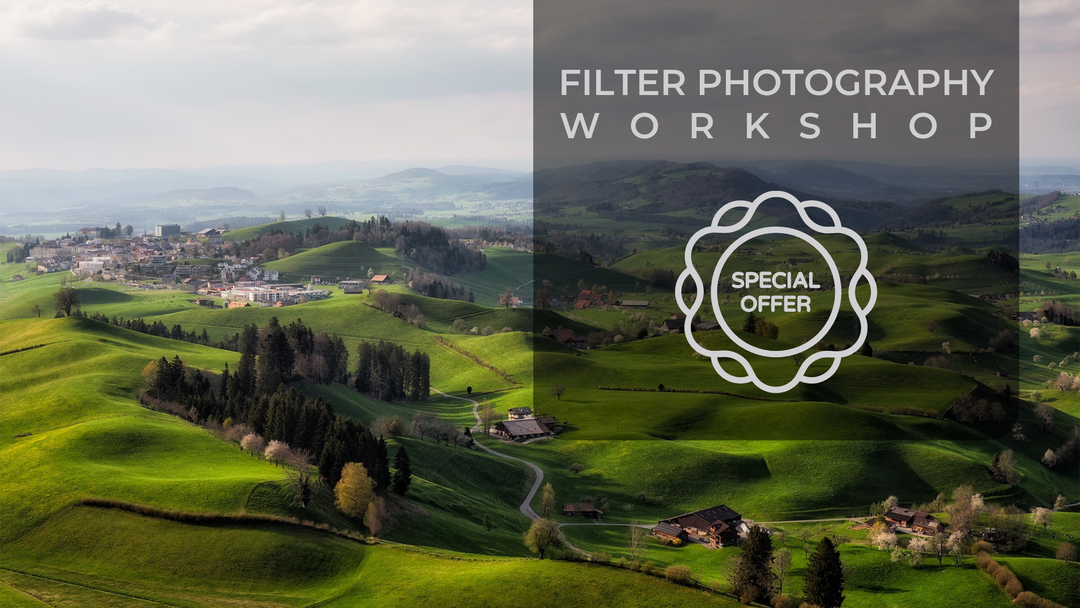Tipps und Tricks zur Wasserfall-Fotografie - Wie man atemberaubende Fotos einfängt

Die 5 praktischen Tipps und Tricks für die Wasserfall-Fotografie.
Die Fotografie von Wasserfällen kann eine Herausforderung sein, aber mit den richtigen Techniken und der richtigen Ausrüstung erzielt man beeindruckende Fotos. In diesem Artikel werden fünf wichtige Tipps für schöne Wasserfall-Fotos vorgestellt, die Deine Bilder unverwechselbar machen.

-
Verwende ein Stativ für mehr Stabilität
Ein stabiles Stativ ist für die Wasserfallfotografie unerlässlich, denn es hält Deine Kamera ruhig und sorgt dafür, dass Deine Fotos scharf werden. Achte bei der Auswahl des Stativs darauf, dass es keine Mittelsäule hat. Das gibt Dir mehr Flexibilität um verschiedene Blickwinkel auf den Wasserfall aufzunehmen. So entsteht eine dynamischere und visuell ansprechendere Komposition. -
Verwende einen Polarisationsfilter zur Farbverbesserung
Ein Polarisationsfilter ist ein unverzichtbares Zubehör für die Wasserfallfotografie. Er reduziert Blendeffekte und Reflexionen auf dem Wasser und ermöglicht es Dir, die natürlichen Farben der Szene einzufangen. Außerdem erhöht er den Kontrast in Deinen Fotos und lässt das Wasser lebendiger erscheinen. Achte darauf, den Filter im richtigen Winkel einzustellen, um den gewünschten Effekt zu erzielen. -
Verwende eine längere Verschlusszeit für seidenglattes Wasser
Eine lange Verschlusszeit ist wichtig, um die Bewegung des Wassers einzufangen und einen seidenweichen Effekt zu erzielen. Verwende einen niedrigen ISO-Wert und eine kleine Blende, um die Lichtmenge zu reduzieren, die in Deine Kamera eindringt, damit Du eine längere Verschlusszeit verwenden kannst. Experimentiere mit verschiedenen Verschlusszeiten, um die perfekte Verschlusszeit für Deine Aufnahme zu finden. -
Berücksichtige die Lichtverhältnisse für eine stimmungsvolle Atmosphäre
Die Lichtverhältnisse können einen großen Einfluss auf Deine Wasserfallfotos haben. Bewölkte Tage sind ideal für die Wasserfallfotografie, da das weiche, diffuse Licht eine stimmungsvolle Atmosphäre schaffen kann. Wenn Du jedoch bei hellem Sonnenlicht fotografierst, musst Du möglicherweise einen Neutraldichtefilter verwenden, um die Lichtmenge zu reduzieren, die in Deine Kamera eindringt. Der frühe Morgen und der späte Nachmittag bieten ebenfalls schöne Lichtverhältnisse, die die Farben auf Deinen Fotos verstärken können. -
Suche nach interessanten Kompositionen für eine einzigartige Perspektive
Und schließlich solltest Du Dir Gedanken über die Komposition Deiner Fotos machen, damit sie auffallen. Suche nach interessanten Perspektiven und Blickwinkeln, die eine dynamischere und visuell ansprechendere Komposition ergeben können. Verwende Führungslinien, um den Blick des Betrachters in das Foto zu führen, z. B. Felsen oder Baumstämme. Experimentiere mit verschiedenen Bildausschnitten, z. B. durch Laub hindurch oder mit einem Weitwinkelobjektiv, um die gesamte Szene einzufangen.

Fazit
Atemberaubende Fotos von Wasserfällen zu machen, kann eine Herausforderung sein, aber wenn Du ein Stativ, einen Polfilter und eine lange Verschlusszeit verwendest, die Lichtverhältnisse berücksichtigst und auf interessante Kompositionen achtest, kannst Du wunderschöne Fotos machen, die Deine Bilder hervorheben werden. Wenn Du diese Tipps beachtest, kannst Du die Schönheit von Wasserfällen in Deinen Fotos einfangen.
Anmerkung
Wenn Du tiefer in das Thema Wasserfallfotografie einsteigen möchtest und diese Tipps im Rahmen eines Workshops umsetzen willst, dann kann ich Dir natürlich meine Wasserfallfotografie-Workshops "Falling Waters" empfehlen.
Hier ist der Link zu den aktuellen Terminen: Falling Waters Workshops
Wenn Du irgendwelche Fragen hast, stehe ich Dir natürlich gerne zur Verfügung.











Hinterlassen Sie einen Kommentar